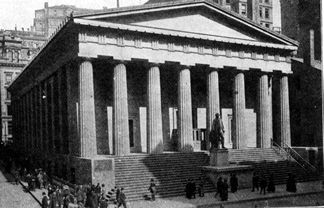1816 Second Bank of the US

The charter of the First Bank of the United States expired in 1811. The War of 1812 had proven expensive and difficult to finance, so with its end, President Madison sought to create the Second Bank, which would help finance the federal debt. Many in Congress opposed the establishment of the bank, but Madison prevailed.
The expiration of the charter for the First Bank of the United States in 1811 marked a pivotal moment in American financial history. This institution, established in 1791, had played a crucial role in stabilizing the nation's economy and managing its financial affairs. However, its closure left the United States without a central banking authority, a situation that became particularly problematic during the War of 1812.
The War of 1812 was not only a military conflict but also a significant financial burden for the United States. The lack of a central bank posed severe challenges in terms of raising funds and managing the nation's finances. Without the ability to secure adequate loans and manage the currency, the federal government struggled to finance the war effort, relying heavily on state banks that issued their own currency. This led to a lack of a uniform national currency, causing economic instability and inflation.
Recognizing the financial difficulties that had arisen during the war, President James Madison, who had initially been skeptical of a central bank, reversed his stance and saw the need to establish a new national bank. Consequently, he pushed for the creation of the Second Bank of the United States. This initiative was part of his broader effort to stabilize the nation's economy and manage the federal debt accumulated during the war.
Despite President Madison's support, the proposal to create the Second Bank faced significant opposition in Congress. Many lawmakers were wary of centralizing financial power and were concerned about the constitutionality of such an institution. The debate echoed the earlier controversy over the establishment of the First Bank, reflecting the ongoing tension between federal power and states' rights.
However, Madison's arguments highlighting the financial disarray and the difficulties in funding the war eventually prevailed. In 1816, Congress passed a bill to establish the Second Bank of the United States, with a charter for 20 years. The Second Bank played a crucial role in restoring economic order and improving the government's ability to handle its finances. It helped to create a more uniform currency, regulated state banks, and provided much-needed credit to the government.
The establishment of the Second Bank of the United States was a significant step in the evolution of the country's financial system. It underscored the importance of a central banking authority in managing a nation's economy, particularly in times of fiscal crisis. The creation of the Second Bank marked a turning point in Madison's economic policy and was a critical response to the financial challenges faced by the young nation in the aftermath of the War of 1812.
 >
>